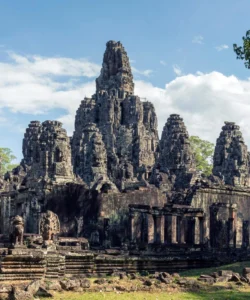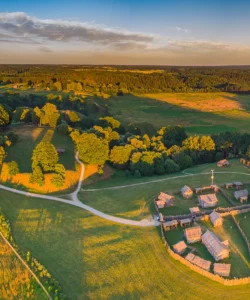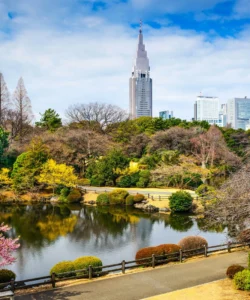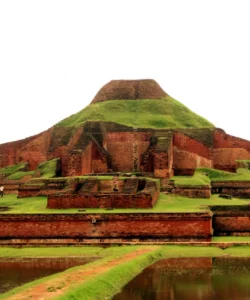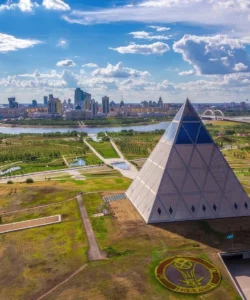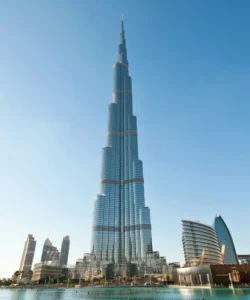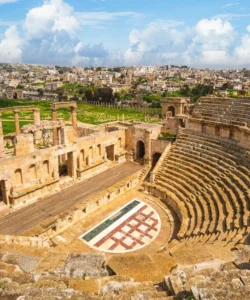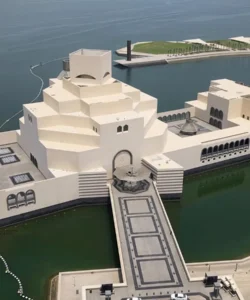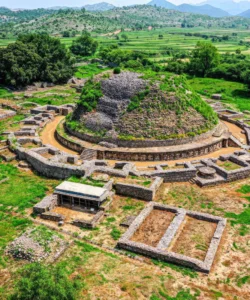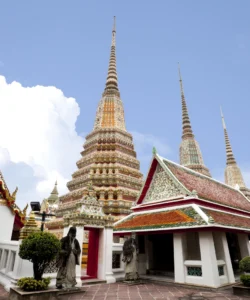Wat Phra Kaeo (วัดพระแก้ว), officially known as Wat Phra Si Rattana Satsadaram, is arguably the most sacred and important Buddhist temple in Thailand. Located within the compound of the Grand Palace in Bangkok, it houses the highly revered Emerald Buddha, making it a pivotal spiritual and cultural landmark for the Thai nation. Unlike most other temples, Wat Phra Kaeo is unique in that it has no resident monks, as it is purely a royal chapel and a repository for the nation’s most precious religious icon.
![]()
Name: Wat Phra Kaeo (วัดพระแก้ว, meaning “Temple of the Emerald Buddha”)
Address: Na Phra Lan Road, Phra Borom Maha Ratchawang, Phra Nakhon, Bangkok 10200, Thailand. It is located within the Outer Court of the Grand Palace complex.
How to get there:
As it is an integral part of the Grand Palace, access to Wat Phra Kaeo is the same as for the Grand Palace:
- By Boat (Recommended): Take the BTS Skytrain to Saphan Taksin Station (S6, Exit 2). From there, go to Sathorn Pier and take a Chao Phraya Express Boat (Orange Flag is common) to Tha Chang Pier (N9) or Tha Tien Pier (N8). The Grand Palace (and thus Wat Phra Kaeo) is a short walk from either pier.
- By MRT (Subway): Take the MRT Blue Line to Sanam Chai Station (Exit 1). From there, it’s a relatively short walk (around 10-15 minutes) to the Grand Palace entrance.
- By Bus: Numerous public bus routes (e.g., 1, 3, 25, 47, 53, 508) stop near the Grand Palace.
- By Taxi/Tuk-Tuk: Readily available throughout Bangkok. Ensure meters are used for taxis, or agree on a price for tuk-tuks beforehand.
Landscape and Architecture:
Wat Phra Kaeo is a dazzling complex of highly ornate buildings and structures, showcasing the pinnacle of Thai religious art and architecture:
- The Emerald Buddha: The spiritual heart of the temple is the Phra Kaeo Morakot (Emerald Buddha), a small (66 cm tall), meditating Buddha statue carved from a single block of jade or jasper, not emerald as its name suggests. It is highly revered and sits enshrined high above the altar in the main chapel (Ubosot). The King himself ceremonially changes the Buddha’s seasonal robes three times a year.
- Ubosot (Main Chapel): The most sacred building, housing the Emerald Buddha. Its exterior is a riot of gold, shimmering mosaics, intricate carvings, and vibrant colors. The roof is multi-tiered and adorned with ornate finials (chofahs).
- Phra Mondop: A beautiful, elegant building with a gilded exterior and a spire, serving as a library that houses sacred Buddhist scriptures (Tripitaka) written on ancient palm leaves. It is generally not open to the public.
- Phra Si Rattana Chedi: A large, gleaming golden stupa (chedi) rising prominently into the sky, believed to house ashes of the Buddha. Its bell-shaped form is covered in gold leaf and sparkles in the sunlight.
- Royal Pantheon (Prasat Phra Thep Bidon): This building houses life-size statues of the first seven kings of the Chakri Dynasty, used for royal ceremonies.
- Model of Angkor Wat: A meticulously scaled replica of Cambodia’s famous Angkor Wat temple, built during the reign of King Rama IV, showcasing the historical and cultural connections between Thailand and Cambodia.
- Ramakian Murals: The long, covered gallery walls surrounding the main temple complex are adorned with a continuous mural cycle depicting the entire epic story of the Ramakian, the Thai national epic derived from the Indian Ramayana. These incredibly detailed and colorful paintings are a significant artistic and narrative feature.
- Mythical Guardians: The temple grounds are guarded by fearsome-looking, colorful statues of Yakshas (mythical giants), as well as mythological creatures like Kinnaree (half-human, half-bird) and Garuda (half-human, half-eagle), adding to the decorative and protective symbolism.
- Gilded Stupas and Pavilions: Numerous smaller golden stupas, elegant pavilions, and other ornate structures are scattered throughout the complex, each meticulously decorated.
- “Barrier of Jewels” (Kampaeng Kaeo): A low, ornate wall that encircles the main Ubosot, demarcating its sacred space.
What makes it famous:
Wat Phra Kaeo is famous for:
- Housing the Emerald Buddha: This is its primary and unparalleled distinction. The Emerald Buddha is the most revered and sacred religious icon in Thailand, a national treasure that holds immense spiritual and symbolic power for the Thai people and monarchy.
- Most Sacred Temple in Thailand: Its spiritual significance to the Thai nation is paramount, being the royal temple and the site of vital state-religious ceremonies.
- Unrivaled Architectural Opulence: It is a breathtaking display of traditional Thai craftsmanship, with every surface adorned in a dazzling array of gold, mosaics, mirrors, and intricate details, making it a visual feast.
- Integrated with the Grand Palace: Its location within the Grand Palace compound means it is intrinsically linked to the history and power of the Thai monarchy, representing the close relationship between the state and Buddhism.
- Ramakian Murals: The extensive and beautifully preserved murals depicting the Ramakian epic are a major artistic and cultural highlight, offering a unique narrative experience.
- Lack of Resident Monks: Unlike almost all other active Buddhist temples, Wat Phra Kaeo does not have living quarters for monks, as it functions purely as a royal chapel for the Emerald Buddha.
Differences from some other wonders:
Wat Phra Kaeo distinguishes itself from other temples and architectural wonders in several profound ways:
- No Monastic Quarters: Its most unique and defining difference is that it does not house monks. While most wats (temples) in Thailand are active monasteries with living quarters for monks, Wat Phra Kaeo is solely dedicated to ceremonial functions and the veneration of the Emerald Buddha, making it a distinct type of royal chapel.
- Supreme Sacred Status: While many temples are sacred, Wat Phra Kaeo holds an unrivaled and supreme level of sanctity in Thailand due to the Emerald Buddha. This elevates its status above virtually all other temples in the country.
- Exclusive Royal Patronage: Historically, its construction and maintenance were exclusively under royal patronage, reflecting its role as the royal chapel of the Chakri Dynasty. This direct and continuous connection to the monarchy is unique.
- Architectural Maximalism: While other Buddhist temples can be grand, Wat Phra Kaeo pushes opulence and intricate detail to an extreme. Its use of shimmering mosaics, gold leaf, and vibrant colors on almost every surface creates a visual intensity that is distinct from the more subdued beauty of some other Buddhist sites (e.g., Japanese or Korean temples).
- Integration of National Epic: The complete cycle of the Ramakian murals encircling the compound is a unique artistic and cultural feature, turning the temple walls into a giant storytelling canvas that reinforces national mythology and values.
- Centrality to National Identity: More than just a religious site, Wat Phra Kaeo (and the Emerald Buddha) is a profound symbol of Thai national identity and sovereignty. Its image is deeply ingrained in the Thai consciousness, perhaps more so than any other single temple in the country.
In essence, Wat Phra Kaeo is not merely a temple; it is a dazzling spiritual and artistic marvel, a powerful emblem of Thailand’s monarchy and deep Buddhist faith, and an experience that stands alone in its unique blend of sacredness, opulence, and historical significance.

